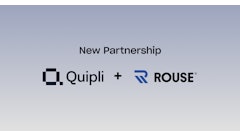
While resurgences of new COVID-19 cases in a number of states have led to those states issuing stricter public health orders, we continue to see a general trend towards marketplaces re-opening, albeit with some significant adjustments for the COVID-19 era.
In some segments of the rental industry, this has led to more requests for rental purchase options and outright equipment purchases. This, together with historically low interest rates, Section 179 and bonus depreciation (which now cover 100% of both new and used equipment, subject to certain limits), and the quickening pace of technology enhancements, make for some attractive opportunities for cycling out old inventory and replacing it with new/upgraded equipment.
Sales and Leases (What’s the Difference?)
That said, equipment rental companies that lean into sales need to be prepared for a different set of legal landmines and potential liabilities.
As a starting point, sales and leases fall under different statutory regimes. The Uniform Commercial Code (UCC), which has been adopted in all 50 states (though in somewhat differing forms), governs both types of transactions. However, sales and leases are governed by two entirely different articles of the UCC (Articles 2 and 2A, respectively), which makes sense when one considers the many different issues involved (as discussed in greater detail below, warranties, maintenance, repairs, insurance, damage waivers, check-outs, check-ins, sale/lease commissions, authorized uses and users, inspections, subleasing, tracking and monitoring, and a wide range of other issues that differ substantially, and therefore, must be dealt with in entirely different ways, or in some cases, eliminated). In fact, sales and leases are entirely different transactions, both functionally and legally.
Rental Purchase Options (Mix the two concepts, add another UCC section and an array of accounting and tax considerations, and shake)
Now, add to the mix rental-purchase options (RPOs), which must incorporate both sales and leasing concepts as well as an array of recently updated accounting and tax rules. For example, where the option purchase price is based upon fair market value at the time of the purchase, RPOs are typically considered “true leases” falling under Article 2A allowing the buyer to deduct the lease payments as expenses, while leaving the asset on the lessor’s balance sheet. Where the option purchase price is nominal (think $1 buyouts), the purchase option is mandatory, or since last December, the stated lease term extends beyond a year and such agreements are typically deemed secured loans, which are governed by Article 9 of the UCC and requiring sales-type accounting (the lessee doesn’t deduct the payments; instead, the lessee capitalizes the equipment as a purchase immediately and, presumably, writes it off, while the lessor accounts for it as an immediate sale).
Article 2 (Sales) and Article 9 (Secured Transactions) differ substantially and predate Article 2A (Leases) by roughly 40 years. As leasing activity increased in the U.S., it became apparent that Articles 2 and 9 were inadequate for leasing situations, which led to the drafting and adoption of some form of Article 2A throughout the United States, other than Louisiana (which uses a combination of codes to reach largely similar results).
Key Considerations
Equipment rental companies who are pivoting toward more sales and RPO transactions need to be prepared for the requirements of UCC Articles 2 and 9, as well as the often very different types of liability exposure and other legal issues (e.g., lien clearances, title transfers, defect claims, and warranty issues).
One critical step is to make certain you have thorough (and legally enforceable) sales, and if necessary, financing agreements at your disposal. These may include a Purchase and Sale, Lease, RPO, Financing, and/or other agreements, depending on the transaction, but at a bare minimum should include a Bill of Sale incorporating terms that protect you, as the seller of the equipment. An important note: You will want to use a very different form of Bill of Sale for purchases as opposed to sales whenever possible.
A Purchase and Sale Agreement is typically used for larger and more complicated transactions that may involve, for example, extended payment terms, loan payoffs/lien releases, negotiated representations and warranties and/or warranty “pass-throughs” (from manufacturers), liability limitations, lease assignments, insurance requirements, and terms pertaining to the delivery of goods, to name a few. Where a Purchase and Sale Agreement is agreed to, typically a Bill of Sale is incorporated to evidence the closing of the sale and the actual transfer of title. By contrast, where a transaction is smaller, less complicated, involves little or no negotiation, and/or payment and transfer of title occur simultaneously, a stand-alone Bill of Sale may be adequate.
An All-Too-Common Mistake
Where equipment rental companies are moving into sales, they are often tempted to simply try to reuse their rental contract (not realizing it is, for the most part, entirely inappropriate for transfers of title), rather than a proper Bill of Sale and/or Purchase and Sale Agreement. As mentioned above, this is a misstep that can cost you dearly. Consider the differences between a lease and a sale transaction. In a lease, the lessor must concern itself with a wide range of issues that are rarely, if ever, relevant to sales, including:
- Scheduling of rental period;
- Checking equipment in and out, including inspection of the condition of the equipment;
- Monitoring the location and maintenance status of the equipment;
- Periodic inspections;
- Training and familiarization;
- Improper use and resulting injuries and/or property damage;
- Servicing, maintaining, and repairing the equipment while on rent;
- Monitoring of hours and charging for overuse;
- Unauthorized subleasing and lending;
- Insurance for hired equipment; and
- Theft or vandalism.
What’s the Big Deal?
Using the wrong document can result in entirely unanticipated liabilities. For example, if a lease is used for a sales transaction and that lease includes provisions for service, maintenance, and repairs, is the seller obligated for those? If so, for how long? Is the seller to be paid for them? Under a typical lease, such obligations might arguably exist for as long as the purchaser owns the equipment. The nature and structure of a sales document is more effective at cutting off such obligations and shielding the seller from further liabilities, including those arising out of maintenance and repair issues and defects discovered after the sale is completed – especially with respect to used equipment.
To effectively accomplish those goals, a proper sales document should contemplate the following concerns, depending upon the circumstances:
- Identification: Clear identification of the item(s) being sold;
- Sale, assignment, transfer, and conveyance language: Buyers will typically want this to be unlimited (i.e., “all right, title, and interest”). Conversely, sellers (particularly of used equipment that may not have been purchased with similar title warranties previously) may want to limit this to “all of seller’s right, title, and interest in and to the equipment;”
- Title warranties. This typically means one of the following:
- Quitclaim Bill of Sale: Conveys all of “seller’s interest” (whatever that might be under the circumstances) in the equipment, but disclaims warranties that seller has free and clear title, and that there are not claims against the equipment. Of course, this is most favorable to sellers;
- Warranty Bill of Sale: Includes warranties that seller has free and clear title, and transfers such title to purchaser. Obviously, this is much more purchaser-friendly and may be required by those purchasing large, hard-to-replace, and/or valuable equipment;
- Warranty waivers: Disclaimer of product warranties, including “AS IS, WHERE IS” provisions and waivers of specific warranties called for under the UCC such as “merchantability” and “fitness for a particular purpose.” Depending on whether you are the buyer or the seller, and/or whether the equipment is new or used, you may want this section to say very different things – the potential effect, of course, being to limit or eliminate the seller’s liability for alleged defects discovered after the sale is closed. You should also consider a waiver of claims with respect to hours shown on hour meters, which may have been rolled back without your knowledge on used or auctioned equipment);
- Return provisions: These might, for example, eliminate the purchaser’s right to return the equipment after purchase, or at a minimum, define notice, inspection, repair, return, and/or refund rights and obligations;
- Indemnity provisions: Critically, indemnity provisions can work in both directions and must be dealt with carefully, as they can create liabilities even where none would exist under the law, or conversely, eliminate many that do;
- Default and remedies provisions: Also critical, default, and remedies provisions can, for example, limit or enhance the rights and/or remedies of either party (a seller for perhaps, the buyer’s nonpayment or refusal to accept delivery; a buyer for perhaps shortages, defects and/or delivery delays) and include provisions calling for prior notice of claimed defaults and possibly a reasonable opportunity to cure such claimed defaults; and
- Control provisions: Provisions controlling litigation and expenses, requiring application of the laws of a given state, determining venue for lawsuits, authorizing specific performance and potentially provisions requiring mediation or arbitration, or requiring the loser to pay the winner’s attorneys’ fees and expenses.
Leases, sales, and RPOs are inherently very different functionally, legally, and economically. This makes it imperative for buyers and sellers of equipment to use the right documents. Improperly or inadequately addressing legal concepts (or in some cases, failing to eliminate them) can result in immense unanticipated liabilities. The current environment is certainly creating some opportunities for buying and selling equipment, but to quote our clients: “make sure you have the right tools for the job.”



















